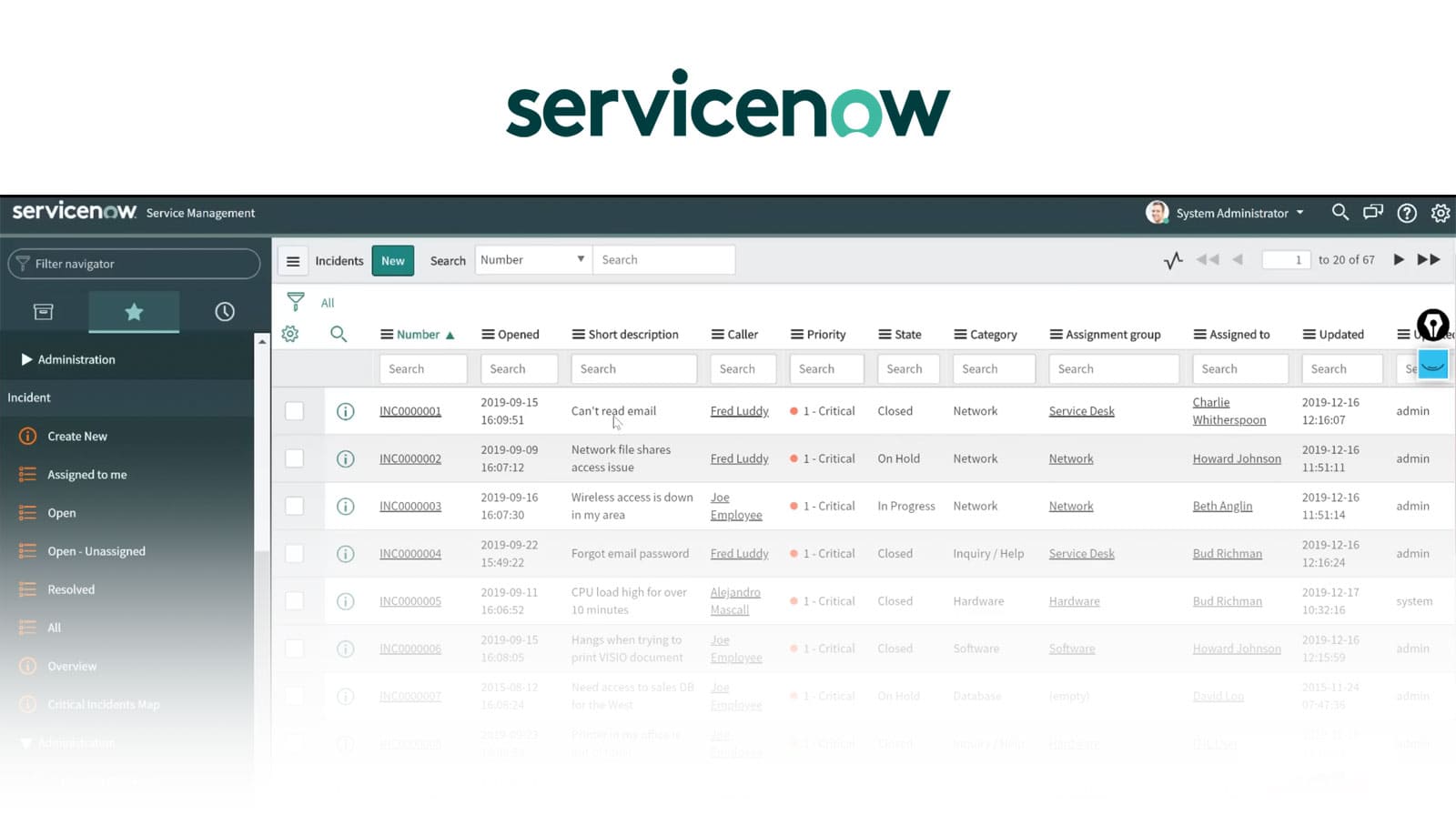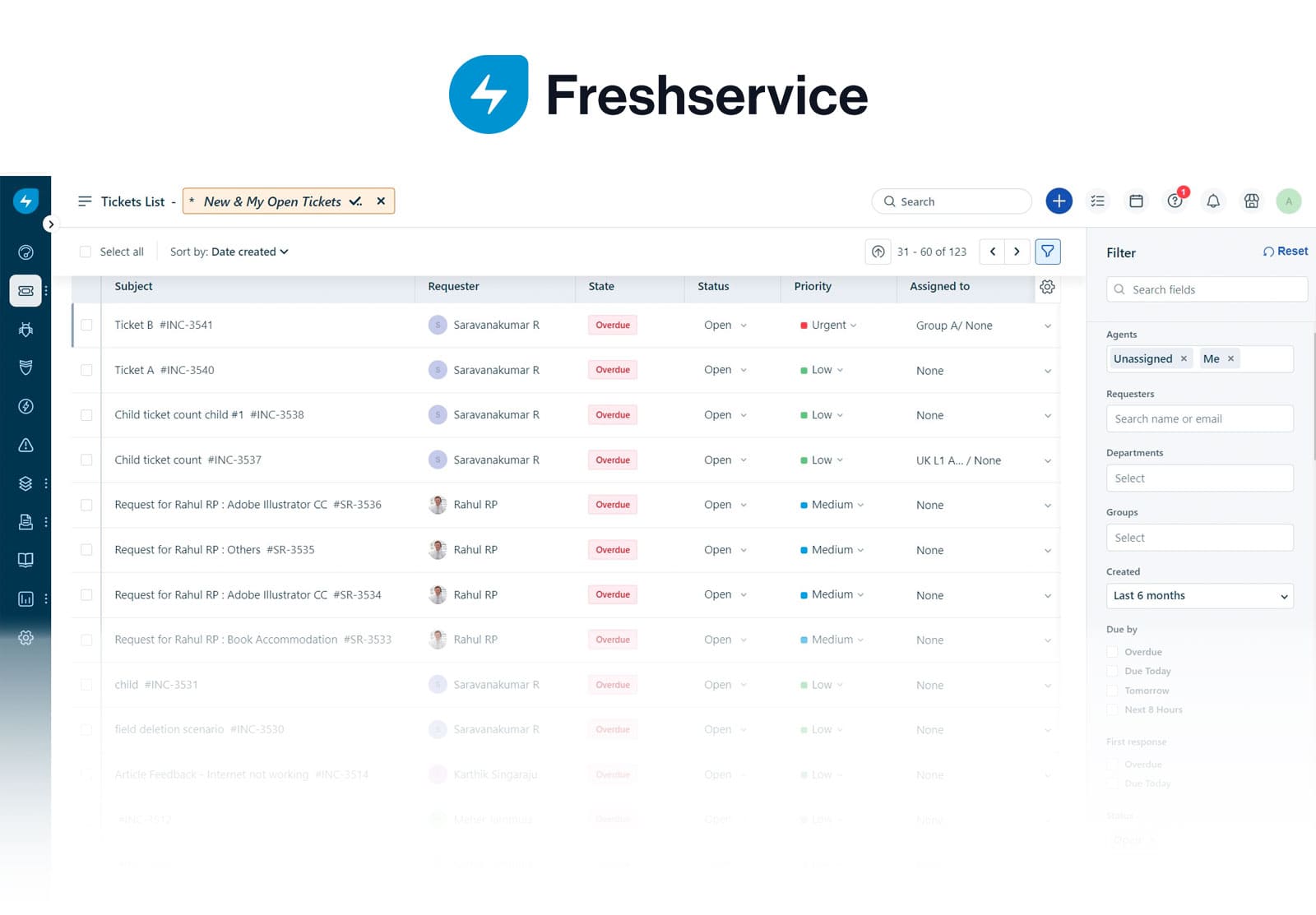Picture a well-oiled machine. Every cog and wheel has its role, working in harmony to ensure smooth operation. In the realm of IT, ITSM vs ITOM represents this harmony.I know: This analogy is a little bit lame. But ITSM vs ITOM is in fact a common discussion in IT circles, and understanding their differences and connections is vital for businesses aiming to optimize their IT strategies. So, any effort trying to be accurate is welcome.
IT Service Management (ITSM) and IT Operations Management (ITOM) are two sides of the same coin, essential for a seamless IT ecosystem. While ITSM focuses on service delivery and customer satisfaction, ITOM ensures that the underlying infrastructure and operations are running efficiently.
Together, they support business units in staying operational by adopting various practices and strategies.
In this article, we’ll explore the definitions, practices, and key differences between ITSM and ITOM. We’ll also guide you on choosing the right software for your needs and explain why InvGate Service Management is a great choice.
By the end, you’ll understand how these frameworks connect and complement each other, driving operational excellence and superior service delivery.
Let’s dive in!

ITSM vs ITOM: Definitions
To grasp the distinction between ITSM and ITOM, we must first understand their definitions. First, they serve specific roles within IT management, each focusing on different aspects of service and operations. ITSM frameworks, for example, often include compliance and regulatory standards to ensure standardized procedures.
Let's see their definitions.
What is IT Service Management?
IT Service Management is a strategic approach to designing, delivering, managing, and improving the way IT is used within an organization. ITSM emphasizes aligning IT services with business needs, ensuring customer satisfaction, and enhancing operational efficiency.
-
Service delivery: ITSM focuses on delivering quality IT services that meet business objectives and user expectations.
-
Service lifecycle: ITSM frameworks, such as ITIL, provide structured guidelines for managing the IT service lifecycle. This includes planning, designing, delivering, and improving IT services, ensuring seamless transitions between each stage.
-
Customer-centric approach: ITSM prioritizes the end-user experience, aiming to deliver services that provide real value.
Common IT Service Management practices
ITSM encompasses several key practices to ensure effective service delivery and management:
-
Incident Management: Resolving incidents quickly to minimize service disruption.
-
Change Management: Managing changes to IT services and infrastructure to ensure minimal impact on business operations.
-
Problem Management: Identifying and addressing the root causes of incidents to prevent recurrence.
-
Service Level Management: Defining and managing service level agreements (SLAs) to meet business requirements.
-
Configuration Management: Maintaining an accurate record of IT assets and their relationships.
-
Knowledge management: Creating, managing, and distributing information assets to enhance operational efficiency by ensuring that information is effectively utilized in service management processes.

What is IT Operations Management?
IT Operations Management (ITOM) involves managing the day-to-day IT infrastructure and operations of an organization. ITOM ensures that IT services are delivered efficiently and reliably, focusing on maintaining and optimizing IT resources.
-
Operational efficiency: ITOM aims to optimize IT operations for maximum efficiency and reliability.
-
IT infrastructure: It involves managing and monitoring IT infrastructure components like servers, networks, and applications.
-
Network Infrastructure Management: This is crucial for ensuring the reliability and security of all IT applications and services. It involves overseeing equipment for internal and external communications, managing remote access networks, maintaining network security, and regulating communication with external servers.
-
Proactive Management: ITOM focuses on proactive monitoring and maintenance to prevent issues before they impact services.
Common IT Operations Management practices
ITOM includes several critical practices to ensure efficient and reliable IT operations:
-
Event Management: Monitoring and responding to events that could impact IT services.
-
Performance monitoring: Continuously monitoring the performance of IT infrastructure to ensure optimal operation.
-
Capacity Management: Ensuring IT resources are adequately scaled to meet current and future demands.
-
Availability Management: Ensuring IT services are available when needed by minimizing downtime.
-
Infrastructure Management: Overseeing the hardware, software, and network components of the IT environment.
So, IT Operations Management focuses on the technical management of IT systems and infrastructure, distinguishing it from IT Service Management, which prioritizes optimizing the delivery of IT services.
ITSM vs ITOM: 10 key differences
ITSM and ITOM may seem similar at first glance, but they differ significantly in their objectives, practices, and focus areas. ITSM is all about service delivery and customer satisfaction, while ITOM is centered on operational efficiency and infrastructure management.
ITOM includes the management of recurring service operations through standardized guidelines. These differences influence how each framework is implemented and used within an organization.
By identifying and understanding these key differences, businesses can better integrate ITSM and ITOM practices to achieve a balanced and efficient IT management strategy.
10 key differences
-
Focus:
-
ITSM: Service delivery and customer satisfaction.
-
ITOM: Operational efficiency and infrastructure management.
-
-
Scope:
-
ITSM: Manages the entire service lifecycle.
-
ITOM: Focuses on day-to-day operations and infrastructure.
-
-
Objectives:
-
ITSM: Align IT services with business goals.
-
ITOM: Ensure reliable and efficient IT operations.
-
-
Approach:
-
ITSM: Customer-centric and service-oriented.
-
ITOM: Infrastructure-centric and efficiency-oriented.
-
-
Practices:
-
ITSM: Incident management, change management, problem management.
-
ITOM: Event management, performance monitoring, capacity management.
-
-
Outcome:
-
ITSM: Improved service quality and customer satisfaction.
-
ITOM: Enhanced operational efficiency and reliability.
-
-
Measurement:
-
ITSM: Service Level Agreements (SLAs) and key performance indicators (KPIs).
-
ITOM: System performance metrics and operational KPIs.
-
- Responsibility:
-
ITSM: IT service managers and service desk teams.
-
ITOM: IT operations teams and infrastructure managers.
Responsibility:
-
-
Integration:
-
ITSM: Often integrates with business processes and other IT practices.
-
ITOM: Integrates with IT infrastructure and technical processes.
-
ITSM vs ITOM: How to choose a software?
Choosing the right software for ITSM or ITOM depends on your organization's specific needs, goals, and existing infrastructure. It's essential to select tools that align with your IT strategy and enhance your operational capabilities.
4 IT Service Management software
When selecting ITSM software, consider tools that offer comprehensive service management features, ease of use, and integration capabilities. Here are five top ITSM solutions:
InvGate Service Management
InvGate Service Management is a robust ITSM tool designed to streamline IT Service Management processes. It provides a user-friendly interface, powerful automation, and extensive customization options, making it ideal for organizations of all sizes.
Key features:
- Incident Management: Efficiently track, manage, and resolve incidents to minimize downtime and service disruption.
- Problem Management: Identify and address the root causes of recurring incidents to prevent future issues.
- Change Management: Plan, implement, and monitor changes to IT services and infrastructure with minimal risk.
- Service Request Management: Simplify and automate the handling of service requests from end-users.
- Self-service portal: Empower users with a self-service portal that provides access to knowledge articles, FAQs, and service request forms.
- Workflow automation: Automate repetitive tasks and workflows to increase efficiency and reduce manual errors.
- Customizable dashboards and reports: Gain insights into service performance with customizable dashboards and detailed reports.
- Asset Management integration: Seamlessly integrate with IT Asset Management to track and manage hardware and software assets.
- Knowledge Management: Create, manage, and share knowledge base articles to improve support efficiency and end-user satisfaction.
- SLA Management: Define, track, and manage service level agreements to ensure compliance with business requirements.
- Mobile accessibility: Access and manage service desk operations from anywhere with mobile apps.
- Collaboration tools: Enhance team collaboration with built-in communication and collaboration tools.
- Multi-language support: Provide support in multiple languages to cater to a global user base.
ServiceNow

ServiceNow is a leading ITSM platform known for its extensive features and scalability. Some of its key features include incident management, change management, asset management, and workflow automation.
BMC Helix ITSM
 BMC Helix comprehensive ITSM solution that integrates with other BMC products. Some of its key features include AI-driven service management, predictive analytics, and multi-cloud capabilities.
BMC Helix comprehensive ITSM solution that integrates with other BMC products. Some of its key features include AI-driven service management, predictive analytics, and multi-cloud capabilities.
Freshservice
 Freshservice modern ITSM solution designed for ease of use and quick implementation. Some of its key features include incident management, service catalog, asset management, and automation tools.
Freshservice modern ITSM solution designed for ease of use and quick implementation. Some of its key features include incident management, service catalog, asset management, and automation tools.
Conclusion
In the ongoing debate of ITSM vs ITOM, it's evident that both are vital for a well-rounded IT strategy. ITSM focuses on delivering and improving IT services to meet business needs, while ITOM ensures that the underlying IT infrastructure operates efficiently and reliably.
By integrating ITSM and ITOM practices, organizations can achieve a balanced approach to IT management, leading to enhanced performance and customer satisfaction. As you evaluate and implement them, remember that the right tools and strategies can make all the difference.
Whether you're aiming to improve service delivery or optimize operational efficiency, understanding the unique roles of ITSM and ITOM will help you navigate the complexities of IT management successfully.
Frequently Asked Questions (FAQs)
1. What is the difference between ITSM and ITOM?
ITSM is all about service delivery and customer satisfaction, while ITOM is centered on operational efficiency and infrastructure management.
2. What are the main goals of ITSM and ITOM?
The main goal of ITSM is to align IT services with business needs and improve service quality, focusing on customer satisfaction. ITOM aims to optimize IT infrastructure operations, ensuring efficiency and reliability.
3. How do ITSM and ITOM complement each other?
ITSM and ITOM complement each other by addressing different aspects of IT management. ITSM focuses on service delivery and customer.















